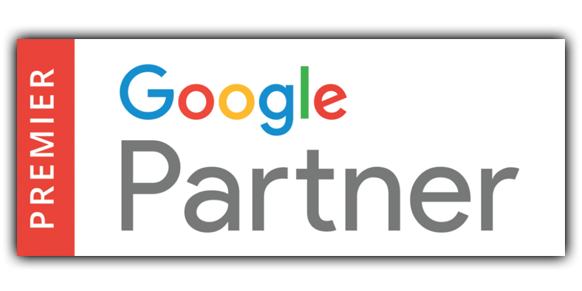Impressions and Clicks and Conversions, Oh My!

This month, I want to go back to basics a little and review the three basic fundamentals of pay-per-click (PPC) advertising.
When you have a PPC campaign (or campaigns) running, there are three basic things that happen that can help you determine your success when everything is all boiled down. Think of them as three stepping stones on the path to success.
First, you have impressions. An impression is when your ad appears on the search results page when someone types in a query. In the PPC world, your ad could appear at the top, right side, or sometimes bottom of the search results page. Kind of like a little billboard on the Google results page for your dealership. If the searcher takes no action on your ad (doesn’t click on it), then this is recorded as an impression. They saw your ad, and now they know you exist, even though they didn’t go to your web site.
There is some “branding” value associated with impressions, but it isn’t very high. After all, they only saw your ad, but they didn’t do anything else.
On a side note: some dealers like to bid on their dealership name, and/or variants of it. The reason is because in some cases their competition also bids on the dealership’s name, and bidding on your own name will have higher quality scores and the competitor’s ad can be pushed farther down the page (or off the first page entirely). While there is some validity to this, I’d consider the circumstances before moving forward with that approach.
The next step on the PPC path to success is a click. Once a searcher has seen your ad (impression), if the ad/offer is compelling enough, they will take action and click on it. At this point, the searcher is sent to a page on your web site that is relevant to the content of the ad they clicked. For example, I search for “Indian Dark Horse,” I see an ad about the Dark Horse and click on it, and am taken to a page on a dealership’s web site that is all about the Indian Dark Horse. It should contain a good description of the bike, several pictures, and maybe an editorial type review by someone at the dealership.
Clicks have more value than impressions, because “clickers” have taken action and visited your web site. These guys are interested enough to check out your dealership web site and click to visit it.
And because we want our web site to act as our digital dealership, and not just be an electronic brochure, there should be “Contact Us,” “Request a Quote,” “Schedule a Test Ride,” “Trade-in Value,” and “Finance Application” buttons on that landing page as well.
Which leads us to the third step in the PPC path to success – conversions. Conversions occur when a web site visitor engages in a desired behavior on your site. This can be anything from downloading a file, signing up for an e-mail newsletter, calling the dealership, watching a video, or what is most common in our business – filling out a form like those I just mentioned.
Conversions are the highest value visits we can get for non ecommerce sites, because we can actually associate an ROI with conversions. Different types of conversions have different ROI values, and this can be tracked when PPC campaigns are properly linked with Google Analytics.
Analytics track everything that happens on your web site – whether as a result of online advertising, or simply from folks visiting your site via other means, like typing your address straight into their browser, or a referral from another site.
To say that having Google Analytics set up properly on your site is important is an understatement of Biblical proportion. If you can’t see what is happening on your site, you can’t capitalize on what is working or correct what isn’t. You end up working on guesses instead of data. That’s a fail.
Now I’m going to get on a soapbox for a second. I normally try to stay neutral on a lot of what happens in our business, and that’s usually pretty easy. Today, not so much.
In our industry, there are three major providers of web sites, and I have historically made no pitch for any one of them over another, because they all pretty much had all of the basic bases covered when it comes to providing a reasonable web presence. I no longer feel they are equal, and I’d like to share my thoughts as to why.
We work with hundreds of web sites every month, and as you can probably guess we deal with many, many web sites from each of the big three providers daily. This isn’t a big deal, as we normally don’t need to do anything more than put Google Analytics tracking code on each of the web sites pages so that everything that happens on the site can be tracked for improvement. This isn’t a big deal, hundreds of millions of web sites use Google Analytics code, and have done so for a very long time now.
What I find troubling, is one of the big three providers is now advising that they can’t use Google Analytics code on many of their pages (specifically inventory pages – where most conversions happen), and not just that. In some cases, this provider has advised clients that they shouldn’t use Google Analytics because that code can cause their site not to function properly.
I won’t speculate as to why they might not be able to add Google Analytics to their web pages (when literally hundreds of millions of other web sites can with no problem), or why someone would say that the code could cause their site to crash (which based on my experience for the last 15 years is total hogwash). I’ll simply say that it is a bad business practice to engage in any marketing effort that is unmeasurable. Especially when there are so many site providers that have no problem providing the normal and customary service of allowing you to track your web site’s performance. If your provider can’t help you track your site’s performance – get a different provider. FAST.
Impressions, clicks, and conversions: these are the steps in the path to web site success. Each has value, which increases with the level of engagement they represent.
If you’d like to talk more about how you can get a done for you AdWords/Analytics solution for your dealership, give us a call: 877-242-4472.
Talk soon,
Brad


